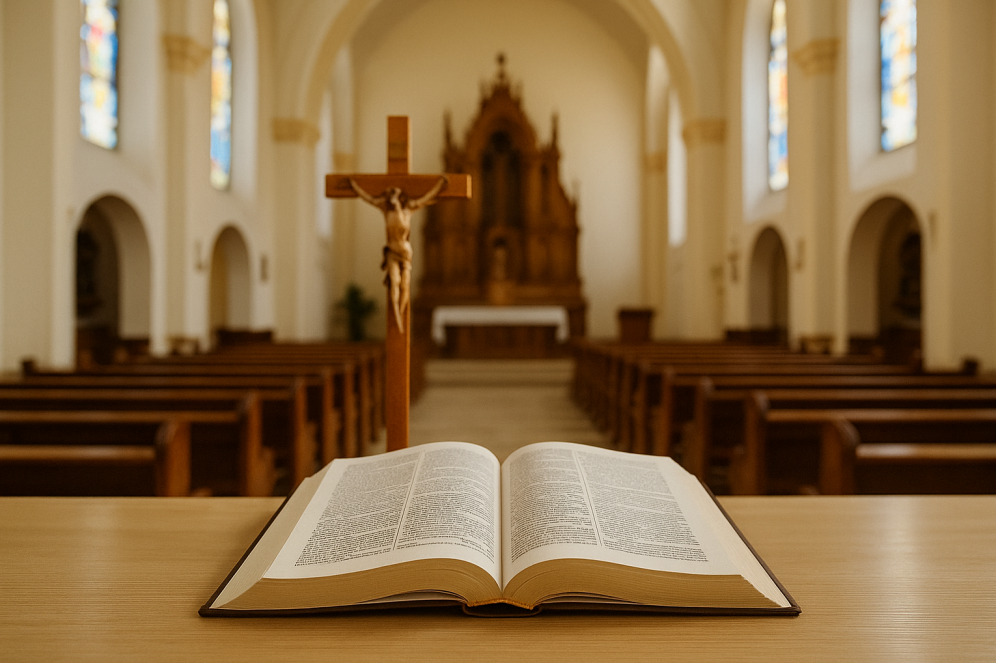
When it comes to Catholicism, a few objections seem to pop up on repeat. Some challenge the idea of confessing sins to a priest. Others question infant baptism, the use of religious statues, or why Catholics venerate the cross. And many argue that early Christians simply worshiped in homes, so church buildings are unnecessary.
If you care about sticking to what the Bible teaches, these are fair questions to wrestle with. But when you dig deeper, you’ll find that Catholic practices are not only consistent with Scripture —they’re firmly rooted in it. Let’s walk through five common objections and how to respond biblically.
1. Did early Christians only worship in homes?
Objection:
“The first Christians didn’t build churches. They met in homes. So why do Catholics put so much emphasis on church buildings?”
Answer:
Early Christians did meet in homes (Romans 16:5) — but that wasn’t because buildings were wrong or home churches were just as good alternatives. It was because public Christian worship was illegal under Roman persecution.
Once it became possible to worship openly, Christians quickly began building churches dedicated to communal worship. Scripture already shows that sacred spaces mattered to God’s people: the Temple in Jerusalem was central to Jewish worship, and synagogues were common gathering places (Luke 4:16).
Building a church doesn’t mean replacing God with a structure. It’s about honoring God with a dedicated, sacred space — just as the people of God always have.
2. Does the Bible teach confession to a priest?
Objection:
“We don’t need a priest. The Bible says we are to confess directly to God; Jesus is our High Priest.”
Answer:
Jesus absolutely is our true High Priest (Hebrews 4:14). But He also established a priestly ministry among His apostles.
In John 20:21-23, Jesus breathes on His apostles and says, “Receive the Holy Spirit. Whose sins you forgive are forgiven them, and whose sins you retain are retained.” That’s a clear authorization for men to forgive sins in Christ’s name.
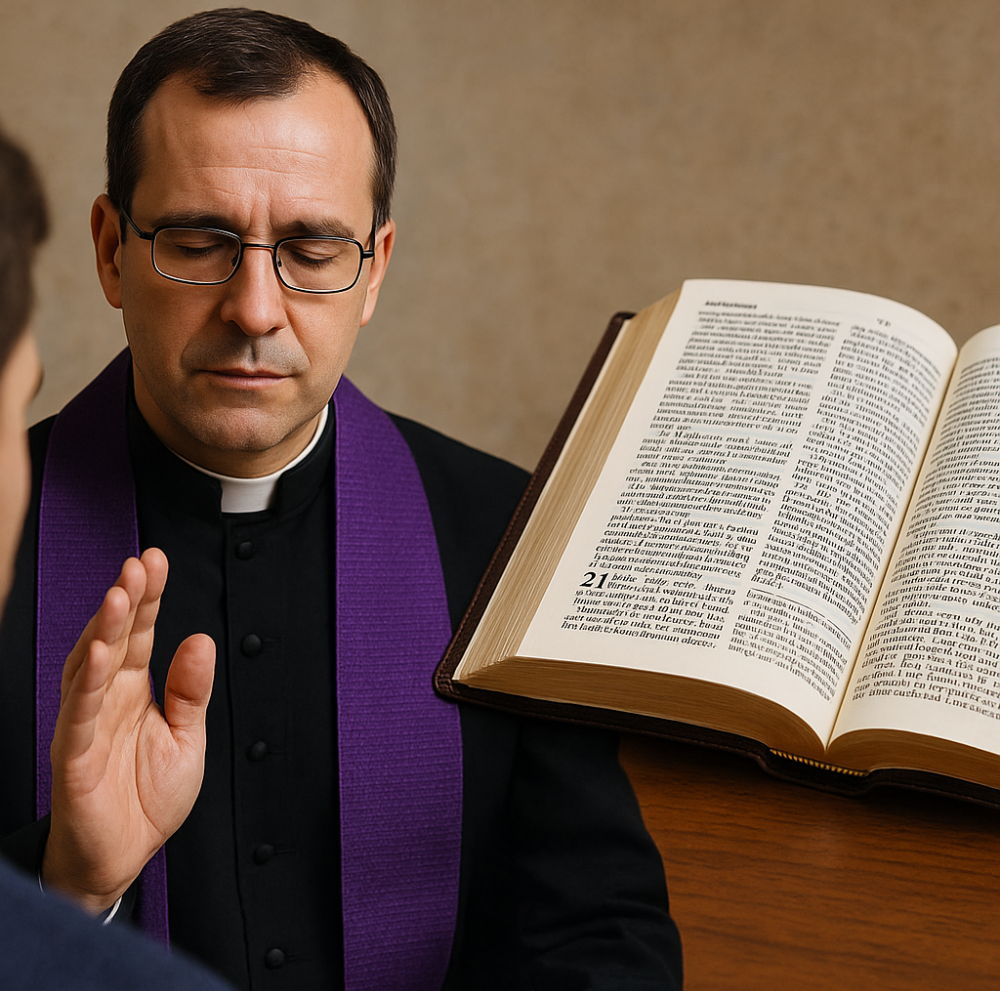
1 John 1:9 says, “If we confess our sins, He is faithful and just to forgive us,” but it doesn’t say, “confess only to God.” In fact, James 5:16 commands, “Confess your sins to one another,” showing that confession was expected to involve the Christian community.
Catholic priests act in the person of Christ, offering the assurance of forgiveness through the ministry Jesus Himself established. Jesus works through His ministers, just as He does in baptism, preaching, and healing. Private prayer is important — but sacramental confession was instituted for our healing, accountability, and peace of soul.
3. Is infant baptism biblical?
Objection:
“Every baptism in the Bible follows a decision to believe and repent. Infants can’t do that.”
Answer:
When the apostles evangelized (Matthew 28:19-20), they preached to adults capable of understanding and responding. Naturally, adult conversions dominate the early accounts.
But Scripture also records that when a household accepted the faith, whole families were baptized (Acts 16:15, 33; 1 Corinthians 1:16), without age limits or exceptions. Household baptism would logically include children and infants, just as household circumcision did under the Old Covenant (Genesis 17:12).
Paul connects circumcision and baptism in Colossians 2:11-12, showing that baptism, like circumcision, is a sign of covenant membership. In the Old Testament, infants received God’s covenant through no personal decision of their own. The New Covenant is even more gracious.
Baptism is primarily about what God does for us — pouring out His grace — not about the recipient’s intellectual understanding.
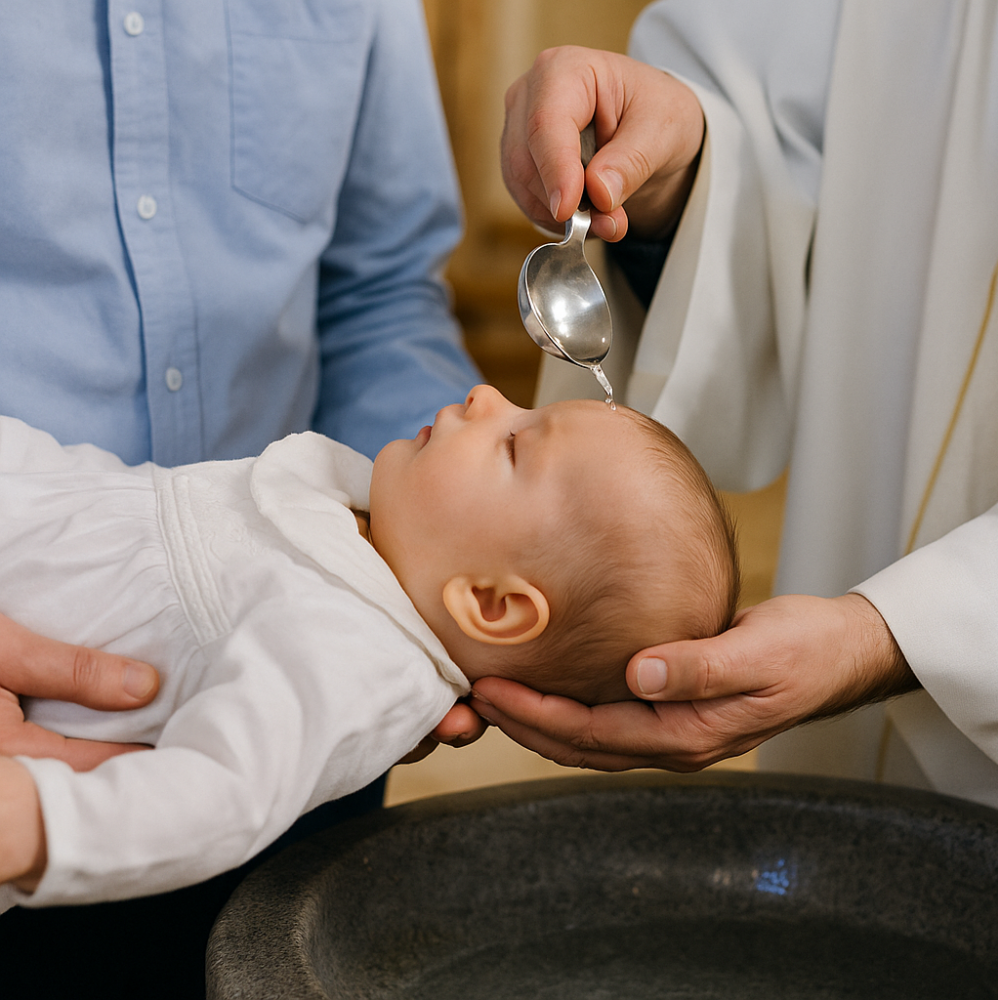
4. Why do Catholics bow to the cross?
Objection:
“Jesus never said to worship the cross. Bowing to it is idolatry.”
Answer:
Catholics don’t worship the cross. They honor the sacrifice it represents.
Paul said plainly, “We preach Christ crucified” (1 Corinthians 1:23). The cross is the sign of Christ’s victory over sin and death.
When Catholics bow to or kiss the cross, they aren’t adoring wood or metal — they’re expressing love and reverence for Jesus, whose sacrifice the cross symbolizes. It’s no different than saluting a flag because you love the country it stands for.
The cross is at the heart of Christian faith. Honoring it draws attention to the price Christ paid for our salvation.
5. Aren’t statues and images forbidden in the Bible?
Objection:
“God said not to make carved images or bow to them. Isn’t using statues in churches idolatry?”
Answer:
Exodus 20:2-4 forbids worshipping carved images as gods. It doesn’t forbid the use of sacred art altogether.
In fact, God commanded Moses to create a bronze serpent (Numbers 21:8-9) and told him to fashion golden cherubim for the Ark of the Covenant (Exodus 25:18-20). The issue wasn’t images themselves — it was idolatry, the false worship of images as divine.
Catholics don’t worship statues. They use them as visual reminders of heavenly realities, just like carrying a photo of a loved one keeps that person close in mind.
The honor given to a statue is like the honor given to a wedding ring — it’s not about the object itself but about the relationship it points to.
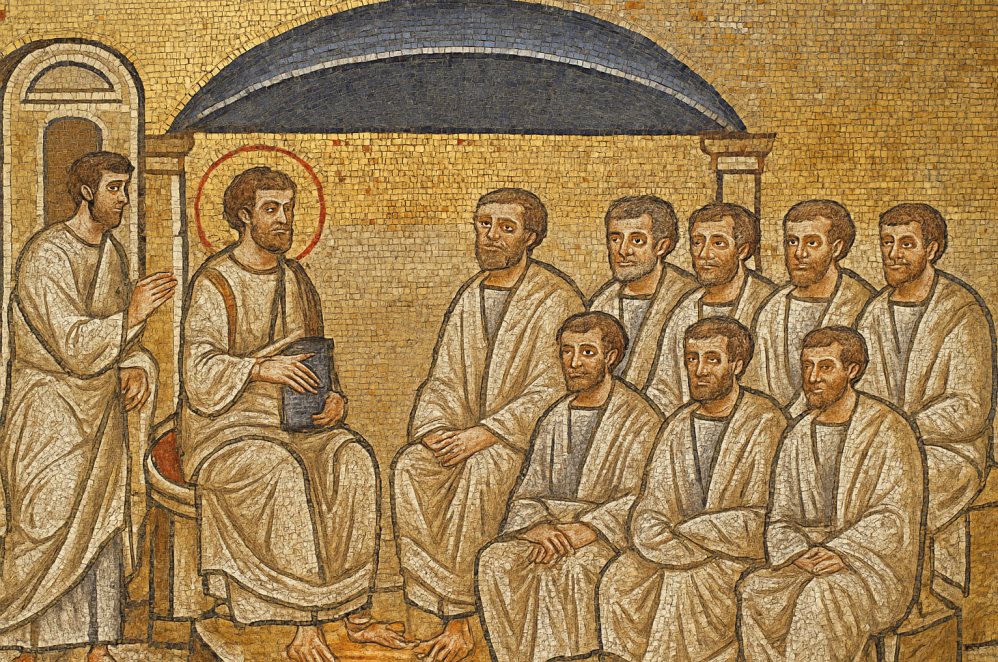
Final Thoughts
Objections to Catholic practices usually come from a sincere desire to stay faithful to Scripture. That’s a good impulse. But when you step back and look at the whole biblical picture, Catholic traditions don’t contradict Scripture — they fulfill it.
The early Church wasn’t invisible, scattered, or purely symbolic. It was physical, sacramental, and visible: gathering in sacred spaces, confessing sins to authorized ministers, baptizing entire households, venerating holy symbols like the cross, and using images to draw hearts to God.
Catholicism doesn’t invent new practices. It carries forward the same faith, handed down from the apostles, and rooted in Christ’s eternal covenant.
About the Author
At Reasoned Faith Blog, we believe faith and reason go hand in hand. Our mission is to make Catholic teaching accessible, biblically grounded, and clear for anyone seeking to understand the truth of the Catholic Church. We aim to explain the faith without fluff—walking with you, not preaching at you—using Scripture, history, and common sense. Whether you’re new to Catholicism, returning after years away, or simply curious, you’re welcome here.
Recommended for further reading:
*This post contains affiliate links. If you make a purchase through these links, I may earn a commission at no extra cost to you. As an Amazon Associate I earn from qualifying purchases.
Why We’re Catholic by Trent Horn — Clear, conversational answers to common questions about Catholic beliefs, traditions, and moral teachings.
Rome Sweet Home: Our Journey to Catholicism by Scott and Kimberly Hahn — A powerful conversion story that explains Catholic doctrine through a Biblical lens.
United States Catholic Catechism for Adults by the USCCB — An approachable, story-driven explanation of Catholic faith and practice for adult learners.
Catechism of the Catholic Church — The definitive, systematic presentation of Catholic doctrine backed by Scripture, tradition, and Church teaching.
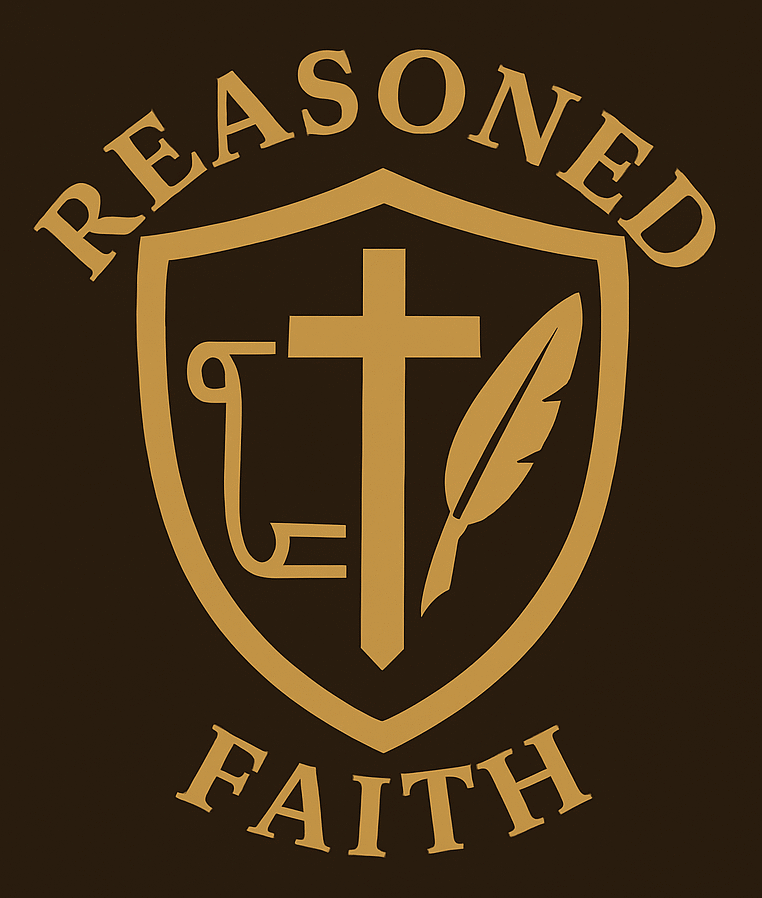
Hi Emilio,
Thank you for sharing your thoughts on common objections to Catholic practices. While I appreciate your sincere desire to align these practices with Scripture, I respectfully disagree with some of your conclusions.
As a Bible-believing Hebrew Israelite, my faith is grounded in the Word of God as the ultimate authority. When I read the New Testament, I see a simplicity in how the early church gathered and worshiped that seems quite different from many Catholic traditions that developed later.
For example, while sacred spaces were important in the Old Testament, Jesus taught that true worshipers would worship “in spirit and truth” (John 4:23-24), emphasizing the heart over the place. The early church met primarily in homes, not ornate buildings (Acts 2:46, Romans 16:5).
Regarding confession, 1 Timothy 2:5 says, “There is one God, and there is one mediator between God and men, the man Christ Jesus.” We can come directly to God through Christ for forgiveness. While confession to one another has a place (James 5:16), the Bible never describes a special priestly class being necessary.
Infant baptism is also not found in Scripture. Baptism always follows personal repentance and faith (Acts 2:38, 8:12). Whole households may have been baptized, but this would logically have included those old enough to believe the message.
Regarding sacred symbols and images, the second commandment is very clear: “You shall not make for yourself a carved image…you shall not bow down to them” (Exodus 20:4-5). Using statues and images, even with sincere intentions, seems to go against this.
I share these thoughts not to attack Catholic practices, but to urge us to look carefully at Scripture. I believe that in eternity, what will matter most is not which religious tradition we followed, but whether we trusted in Christ alone for salvation and allowed His Word to shape our worship and lives. As Revelation 22:18-19 warns, may we not add to or take away from what is written.
I’m certainly open to further dialogue on this. Above all, my hope is that we would both know Jesus more deeply and represent Him faithfully. I appreciate you giving consideration to a different perspective.
Blessings,
Eric
Thank you sincerely for sharing your perspective. I appreciate your thoughtful approach and the opportunity to discuss these important matters grounded in Scripture and love for Christ. I’d like to respond point-by-point to clarify how Catholics understand these issues:
1. Authority of the Word of God and the Church
Catholics absolutely affirm the authority of God’s Word. But Scripture itself teaches that the Church—not the Bible alone—is “the pillar and foundation of truth” (1 Timothy 3:15). Jesus did not leave a book but a living Church with teaching authority (Matthew 16:18-19; Matthew 18:17-18). The Apostles transmitted the faith both in written Scripture and by oral tradition (2 Thessalonians 2:15; 2 Timothy 2:2). Catholics follow both, as Scripture commands.
2. Worship “in spirit and truth” and sacred spaces
When Jesus said the Father seeks worshipers “in spirit and truth” (John 4:23-24), He emphasized sincere, interior worship—but He did not abolish sacred places. The early Christians still met at the Temple (Acts 2:46; Acts 3:1), then later consecrated homes and spaces for the Eucharist (Romans 16:5). Worship in spirit and truth fulfills—not rejects—the idea of setting apart spaces for God.
3. Confession and Christ the One Mediator
We wholeheartedly agree that there is “one mediator between God and men, the man Christ Jesus” (1 Timothy 2:5), who gave Himself as ransom for all (v.6). But recognizing Christ as the one Mediator does not mean rejecting the ways He chose to mediate His grace to us—including through His ministers. After His Resurrection, Christ delegated the forgiveness of sins: “If you forgive the sins of any, they are forgiven” (John 20:21-23).
Confessing to a priest is not replacing Christ—it is encountering Christ through the ministry He instituted. I would respectfully ask: if Jesus authorized His Apostles to forgive or retain sins, how does that fit with the idea that confession is unnecessary?
4. Infant Baptism and “those old enough to believe”
You mention that households being baptized would “logically” only include those old enough to believe. I would ask: why must we assume that? In the biblical culture, a household included infants, children, servants, and extended family (cf. Genesis 17:12 for circumcision).
At Pentecost, Peter declared: “The promise is for you and your children” (Acts 2:38-39). Just as infants were included in the Old Covenant through circumcision, so too are they included in the New Covenant through baptism (Colossians 2:11-12). Faith grows after baptism, especially in children raised in the faith.
5. Statues, Images, and Exodus 20:4-5
You point to Exodus 20:4-5, which forbids making and bowing down to idols. Catholics fully agree we must never worship anything created. But note: God later commanded sacred images—such as the cherubim atop the Ark of the Covenant (Exodus 25:18-22) and the bronze serpent lifted by Moses (Numbers 21:8-9).
The prohibition is against worshiping images as gods, not against using art to honor God or teach spiritual truths. Catholics venerate saints (honor them), but worship is due to God alone. Statues help remind us of heavenly realities, just like the Ark’s cherubim reminded Israel of God’s presence.
6. Trusting in Christ Alone
We agree fully that salvation is in Christ alone (Acts 4:12). But belonging to Christ includes belonging to His Body, the Church (1 Corinthians 12:12-27), obeying His teachings (John 14:15), receiving the sacraments He instituted, and persevering in faith and love (James 2:24; Matthew 24:13).
Catholicism is not about man-made religion, but faithfully living the full relationship Christ offers, through the means He gave.
7. Adding to or Taking Away from Scripture
Revelation 22:18-19 warns against corrupting God’s revelation. Catholics agree. The Church does not add or subtract from Scripture, but preserves the full deposit of faith passed down by the Apostles, both in written and unwritten forms (2 Thessalonians 2:15; 1 Corinthians 11:2).
Closing paragraph:
I sincerely appreciate your openness to dialogue and want to be clear that I do not take your comments as attacks on Catholic practices. It’s clear you are sharing out of a sincere desire to honor God and follow Christ faithfully. I hope you see my responses in the same spirit — not as an attack, but as a fraternal sharing of how Catholics understand these teachings through Scripture and the apostolic tradition. If you’d like, I would love to continue the conversation here or on my Reasoned Faith Facebook page: https://www.facebook.com/ReasonedFaith.
May we both continue to grow in the fullness of truth that Jesus desires for all His followers (John 17:17, 21). God bless you, and thank you again for engaging so thoughtfully.
The way Catholic practices are often misunderstood or misrepresented really stands out in this discussion. One point that resonated with me was the misunderstanding surrounding the veneration of saints and Mary, as many see it as worship rather than a respectful honor. From my experience, it’s crucial to explain the distinction between veneration and worship to avoid confusion. It’s also interesting to consider how these practices connect to the broader tradition of the Church and the role they play in fostering a deeper spiritual connection. I’ve found that many of the objections are rooted in a lack of understanding about Catholic doctrine, rather than a rejection of its practices themselves.
Absolutely — you nailed it. So many objections come not from malice but from misunderstanding. The distinction between worship (which belongs to God alone) and veneration (deep respect for those who reflect God’s holiness) is key. When people see a Catholic kneeling before a statue, they often assume idolatry — but don’t realize that it’s no different than asking a fellow Christian to pray for us, or honoring a photo of a loved one. These practices don’t compete with Christ — they draw us closer to Him through the witness of those who loved Him best. Thank you for highlighting how important it is to clarify, not just defend.